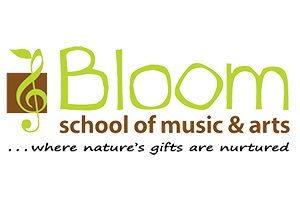The Science of Sound (Museum Musings: Orchestral Manoeuvres)
Have you ever wondered how sounds are made? And how do our ears perceive sounds? Let us explore the science of sound!
Sound is energy that can be heard. When matter (for example, air) interacts with an object (or example, the strings of a guitar), the vibrations of the matter and the object produce sound waves that travel in all directions.
Our ear is designed to hear sounds: The outer ear collects the sound waves, which then move through the ear canal and hit the ear drum. The ear drum is a tightly stretched tissue that vibrates like the surface of a drum. The parts in the inner ear pick up the vibrations, and send signals to the brain, which then interprets them as sounds.
How could your senses—other than hearing or touching—enable you to experience sounds and music?
This video below is quite an informational, and enjoyable episode by the Exploratorium, where the host, Vivian Altmann, explores what sounds are, and explains the facts and concepts of sound through some very fun Science experiments (you can try them at home too)!
Storytime Science for Kids: Sound and Vibration is another fun video by the Exploratorium to learn about sound and vibration, and you will also learn to create some really cool Halloween tricks!
Mixing random sounds together only makes noise. How then do we make music? We create music by purposefully combining sounds, while taking into considerations these musical concepts:
1. pitch (the highs and lows of sound)
2. timbre (tone colour / sound quality)
3. volume (dynamics / the intensity or size of sound waves)
Be a maker!
Throughout history, the pioneers of music have always been creative, innovative, and resourceful, exploring and discovering different ways to make music. The Maker Movement comprises people from various fields who collaborate and work together to experiment with, and invent new instruments and ways of performing music. Music makers are fearless risk-takers who bring their ideas to life through a variety of creative design processes including hands-on experimenting, and trial-and-error. Makers often start with an idea, followed by developing a prototype, testing it, and then improving it.
A unique example of skilful maker collaboration is Vienna’s Vegetable Orchestra. The members, who come from various artistic and music backgrounds, make and play instruments made of… you guessed it, vegetables! This choice of instrument will make an excellent argument for when your Mum tells you, “Don’t play with your food!”
Are you ready to make music?
Borrow Maker Projects for Kids Who Love Music by Rebecca Sjonger from our local library, or browse this site for some ideas to kick-start your music-making journey, and try your hand at making experimental musical projects, such as the Rain Stick!
Remember to tag us on Instagram @bloomschoolsg and hashtag #BloomSchoolDIY, so we can see your fantastic, creative, and unique musical crafts! Here are some of ours:
View this post on Instagram
If you are not already playing an instrument, let Bloom School of Music & Arts start you on your musical journey! We are one of the few schools in Singapore offering Musikgarten, USA’s leading Early Childhood music programme, for kids 0-3 years old. Musikgarten graduates can then move on to Bloom’s very own Tutti music programme. Upon completion, our students are often ready for group, or individual instrumental courses (we offer piano, violin, ukulele, guitar, and drum!)
Come visit us for more information on schedules for classes, or fill up this Online Enquiry Form, and we will get back to you!
Museum Musings
I was so excited to finally make a trip down to ArtScience Museum for this treat of a visit! Read on as I review some of the more interesting artworks (and my favourites)!
Orchestral Manoeuvres: See Sound. Feel Sound. Be Sound was such an experience to be had at ArtScience Museum! Held from 28 August 2021 through to 2 January 2022, this auditory and visual journey challenges your notions on how you perceive, experience, and understand sound. Comprising the art of 32 artists and composers from all over the world, the exhibition presents four distinct types of works: artworks that make sound; everyday sound-making objects that have been transformed into artworks; scores as instructions for music-making; and, silence. Visitors could explore and marvel at sound art projects, early music notation, experimental scores, noise-making sculptures, video installations, and contemporary artworks at the exhibition.
In this video, Adrian George (Director, Exhibitions and Museum Services at ArtScience Museum) and Amita Kirpalani (Curator at ArtScience Museum) share the curatorial process of how the artworks are presented, and highlight the work of some of the world’s leading artists, whose explorations of the sonic landscape encourage us to listen more closely to the sounds around us.
The layout of the museum resembles the nautilus shell (coincidentally, or not, is also the shape of our cochlea!) Hence, the first, and biggest question: How have the artworks in this exhibition been orchestrated, or scored, so that they blend sonically across the various galleries? Hint: The answer is in the Q&A portion of the video above!
I love the thought-provoking questions peppered about the exhibition: they help expand the way we think about, experience, and understand sound. As the artworks beckon to you to experience them, one question resounds: What story do these sounds tell?
Earlier, we learnt that all sounds are born of vibrations. The Resonance gallery includes Hannah Perry’s Rage Fluids (2021), a sculptural construction of resonance. Deep bass tones are played periodically through partially hidden speakers, and in turn, the material of the sculpture vibrates in response, and amplifies the sounds.
Also featured in the Resonance gallery is Carsten Nicolai’s Milch (series of 10) (2000). Sounds waves are made visible when they bounce off materials, and unsettle the surfaces of liquids, and Nicolai captures that effect sounds waves have on the surface of a container of milk. Can you guess the type of music being played in each of these pictures below?
*
The Sounds Around gallery has a lot of fun artworks, including Zul Mahmod’s Resonance in Frames 3 (2018), and Resonance in Frames 2 (2018). Zul Mahmod uses utilitarian materials and objects to depict sound as a system we might tune into. Speaking of systems, the sights and sounds of our train station is also quite exciting, and I think this artwork resembles our intricate and functional MRT map! What do you think?
The world around us has always been the inspiration for sound-making, since the earliest moments of human existence. It can also be easily argued that the first musical “instrument” was the human body itself! Do you agree?
You are your own instrument
Whisper and shout. Sigh and whistle.
We can create different sounds by controlling our breath.
Our bodies are great sound instruments.
We can clap our hands and tap our feet.
What other sounds can you make with your body?
This was a thoughtful consideration for this exhibit, which I appreciated, especially after experiencing the breathtakingly beautiful installation by Canadian artist Janet Cardiff (This was the highlight of the exhibition, and my favourite!) The Forty Part Motet is a rework of Spem in Alium (1556) by Thomas Tallis—one of the most important Renaissance composers of sacred music—and performed by the Salisbury Cathedral Choir. Cardiff’s installation comprises speakers arranged in eight groups of five, in a circle. Each singer’s voice, which was recorded separately, emanates from its own speaker. Listeners are encouraged to move around to experience intimate connections with single and groups of voices, or be at the centre to bathe in 40-part surround sound. Did you know that choral performances and communal singing releases serotonin and dopamine, the ‘feel good’ chemicals in our brains?
We all love cat videos! Here in the Auto Tune gallery, American artist Cory Arcangel playfully recreates a very serious piece of classical music with a collage of ‘cats playing piano’ videos collected from YouTube. Arnold Schoenberg is a 20th century classical music theorist and composer who created new methods of musical composition involving atonality, paving the way to a new world of sound.
Technology changes the ways in which we interact with, create, manipulate, play, collect, contain, and record sound. Cory Arcangel’s work, Arnold Schoenberg, op. 11 – I – Cute Kittens (2009), signals an evolutionary turn in music-making—with the right software, we can digitally create sounds, and recreate music, for example, modulate and change recordings of our voices, or correct tone and pitch as we feel.
These interactive sound totems are constructed from everyday objects. Each totem is different, and toys with a form of onomatopoeia (the totem’s sound refers in some way to the combination of objects it is comprised).
Visitors are encouraged to compose their own musical idea using shapes, words, or symbols, and then perform their score with these artworks.
The Playlist gallery explores a kind of music-making called aleatory music: any form of music that involves elements chosen at random by the performer. How will you interpret this graphic score (the representation of music through different images and symbols) below?
*
This was a unique setup along the spiral staircase from one level to the next above. It was both thrilling and terrifying as you walked along, and listen to a variety of sounds overlap, bounce off the narrow stairwell, and echo along the path, until you reach the top of the stairs. PerMagnus Lindborg is a composer whose research in sound perception and design is anchored in computer music. His compelling sound installation, Stairway to Helheim (2021), examines how architecture and sound overlap in liminal spaces. What is the soundtrack playing in your head, as you stand at the verge of something, looking out into the unknown, waiting to transit to the next stage, or event? *shudder*
It was such an immersive, and interactive experience! There are far too many artworks to share here, including interesting manuscripts and instruments, recorded performances, and video installations.
If you’re curious about experiencing sound in unconventional ways, take this virtual tour of Orchestral Manoeuvres: See Sound. Feel Sound. Be Sound with Md. Salihuddin (Coordinator, Programmes):
I hope you have enjoyed this first post for Museum Musings!
Let me leave you with this apt message, left by a beautiful soul who had also experienced this exhibition:
💗





















